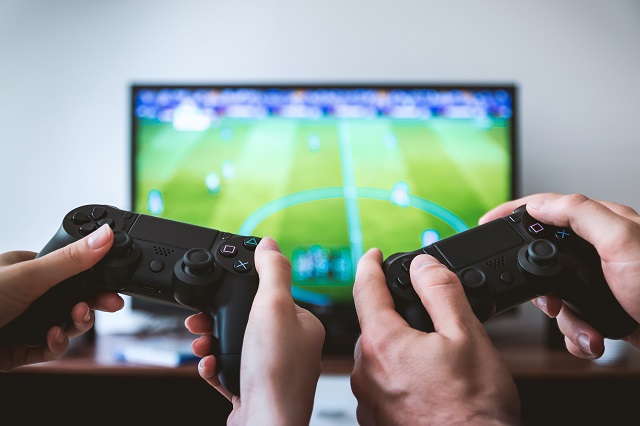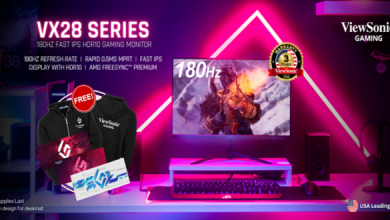
Despite its many critics, playing video games can actually be good for you. And even these days after the festivities of ringing in 2021 are calming down, we can’t deny that gaming can help improve your problem-solving skills and manual dexterity, as well as enhance your capability to concentrate. It also helps the brain increase its memory capacity and process information faster, resulting in better and faster decision-making. Video games can also teach the value of persistence.
That said, all these cognitive benefits don’t take away the fact that playing video games is a lot of fun. Whether you’re playing solo, with friends, or with competitors from all over the world, video games offer an exciting, enjoyable experience.
To make things even more enjoyable, you need to match your console with a great television. With a gaming-ready TV, you’ll be fully immersed in the game.
For the perfect television for your gaming needs, here are the top things you need to consider:
Resolution
Over the past decade, video game consoles displayed content in 1080p resolution or Full HD (FHD). Newer consoles such as the Playstation 4 Pro and Playstation 5, on the other hand, are designed with 4K Ultra HD (4K UHD) resolutions.
Note that FHD TVs are still capable of producing sleek, beautiful visuals. Most games are actually still made with FHD in mind. Just remember that the console makers and game developers are now moving towards 4K UHD. In the future, you won’t be able to maximize the capabilities of new consoles if you stick with FHD TVs.
Display Technology
FHD and 4K UHD are measures of resolution. Meanwhile, HDR or high dynamic range is a measure of contrast. You may not notice the difference in resolution, especially in smaller TVs, but you’ll definitely see the difference in contrast.
HDR display technology creates brighter whites, darker blacks, and sharper details. In short, it gives you better image quality. If you play video games with beautiful sceneries and realistic backgrounds, a TV with an HDR display can make them look even more stunning.
Input Lag
For hardcore and competitive gamers, input lag is arguably the most important factor in choosing a TV. Input lag is the time it takes for the TV to display or register the corresponding action when you press a button on your controller.
If the input lag is high (50 milliseconds or higher) you’ll be at a disadvantage if you’re playing competitive games. While not all televisions have readily available input lag information, there are plenty of online resources that can help you conduct tests. You can also find lists created by tech and gaming sites where they rank TVs for their input lag rating.
There are also manufacturers that make TVs with “game mode” or similar settings. Usually, picking this setting optimizes the response time to minimize input lag (aside from optimizing the display). If you don’t know the TV’s input lag rating, then opt for a TV with a setting for playing video games.
Refresh Rate
Another priority of competitive gamers is the TV’s refresh rate. This is usually measured in frames per second (fps) or Hz. For viewing purposes, 24 fps is the minimum. It’s the standard for most movies and TV shows, capable of presenting realistic movement.
Gaming is another story, however. For casual gamers, a 60 fps refresh rate is good enough for a smooth gaming experience. Competitive gamers, on the other hand, will appreciate a 120 fps refresh rate. This is because lower fps will cause glitches and “visual tears.” Meanwhile, higher fps results in smoother visuals that allow players to react faster and see more details.
Connectivity
FHD and even HD TVs are equipped with at least one HDMI port, which is all you need for most previous and current generation gaming consoles. However, for newer consoles that have 4K UHD support, you’re going to need a TV with HDMI 2.0 port. This will give you 60 fps performance and 4K UHD visuals. Most 4K UHD televisions will already have this feature, however, so you don’t need to worry too much.
If you’re going to play using older consoles, you’re going to need other kinds of ports such as an aerial socket or a SCART socket. You may also need to purchase adapters, receivers, and other paraphernalia for these to work properly. The visuals may not be as good, but you’ll definitely see improvements thanks to upscaling (your TV “upgrades” low-resolution content to fill the entire screen).
In the end, not all televisions are created equal when it comes to gaming. There are many TVs that provide excellent performance for watching movies, but don’t offer the same quality when you use them for video games.
Consider the above-mentioned television features if you want to make the most of your gaming experience. Do your research and read reviews. You should also evaluate your own gaming habits so you can get the best TV for your needs.







